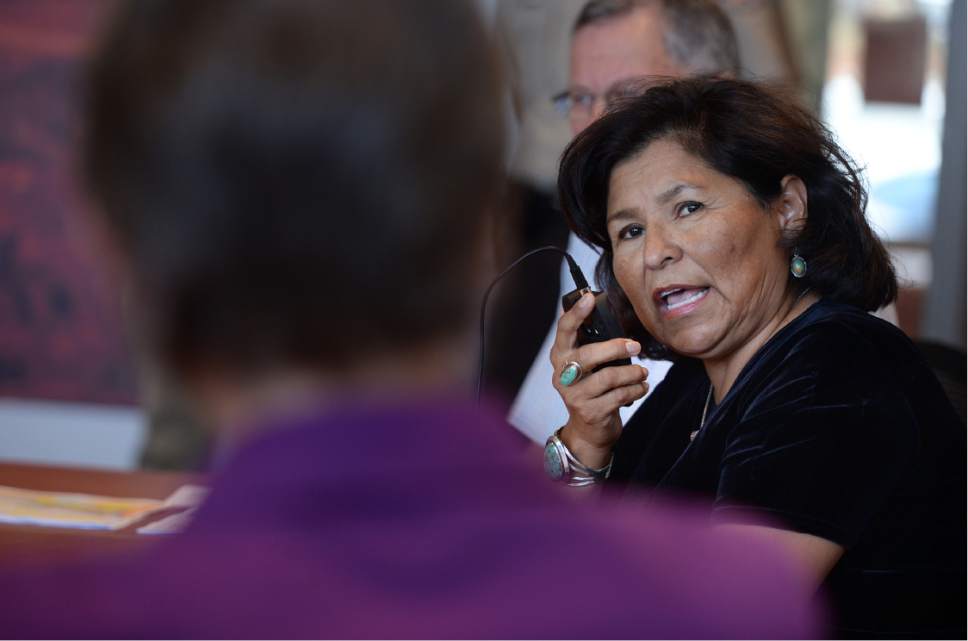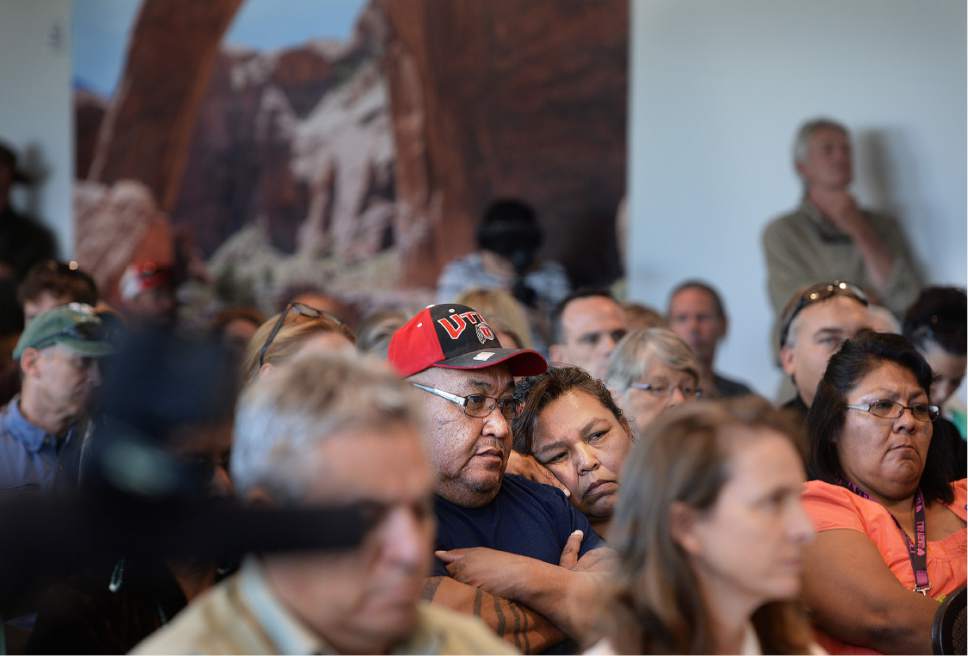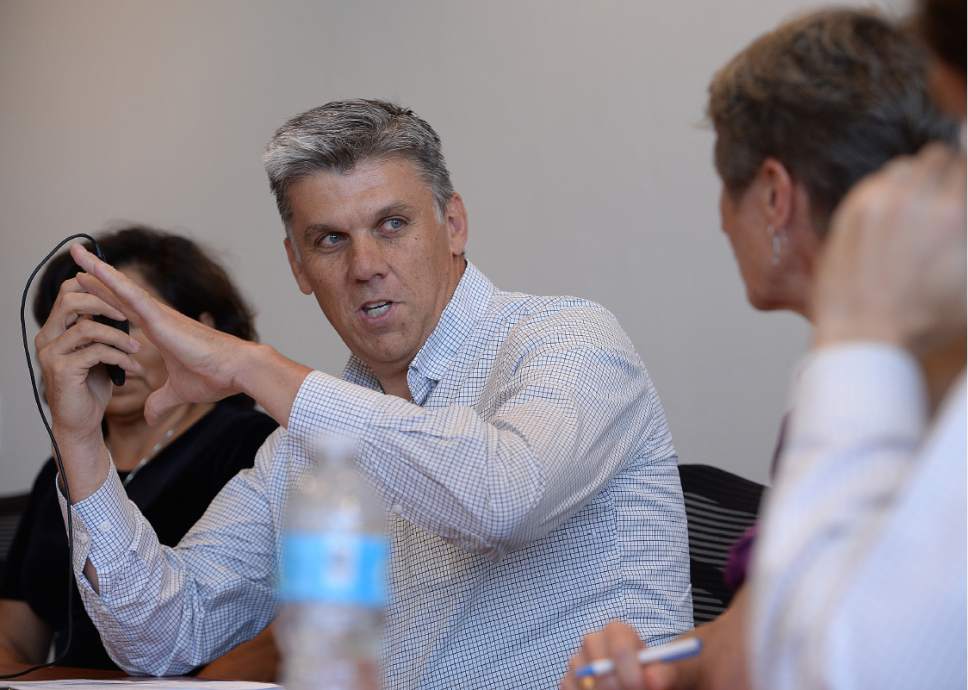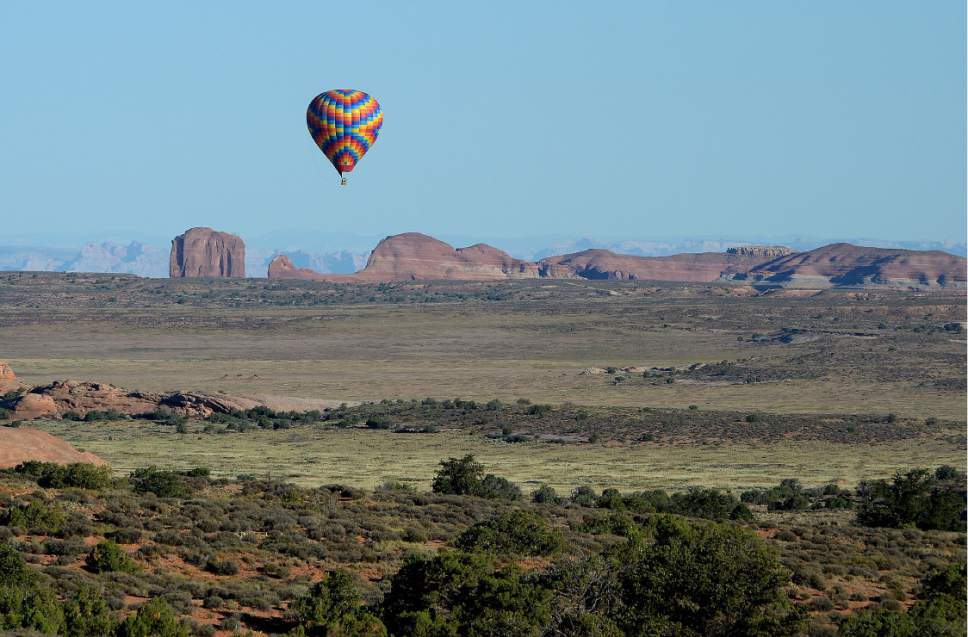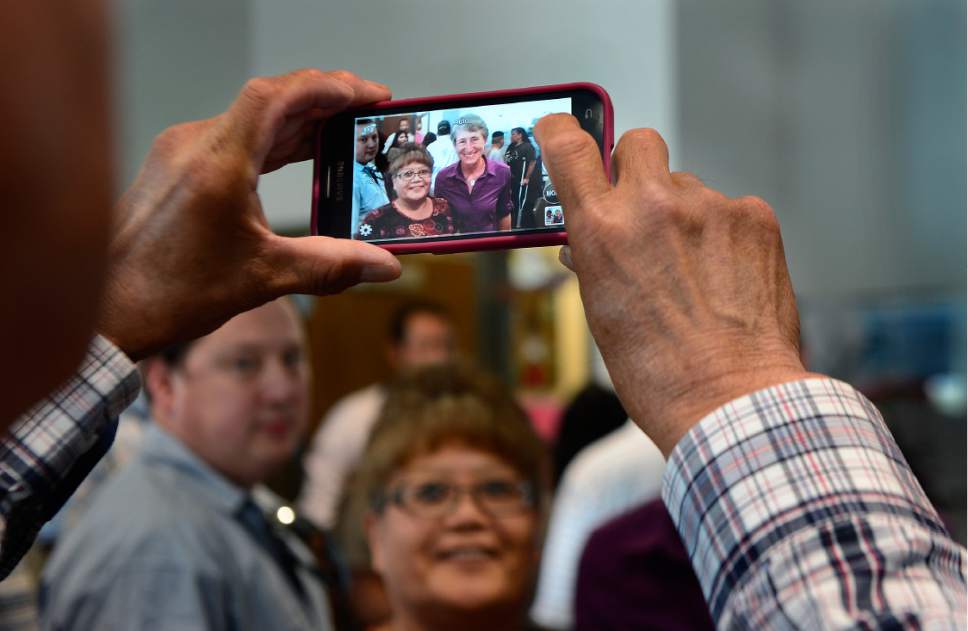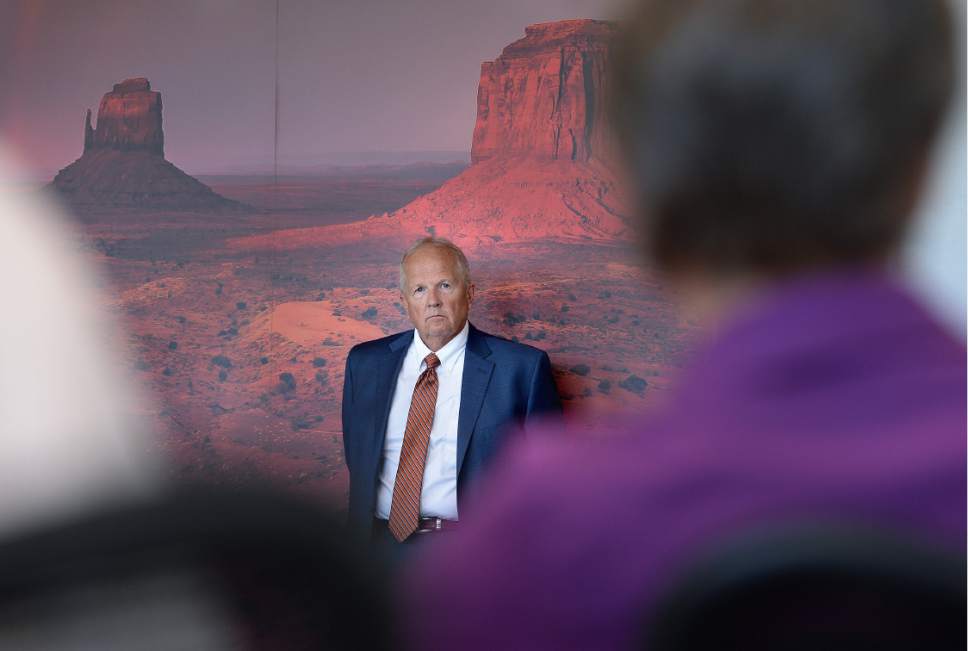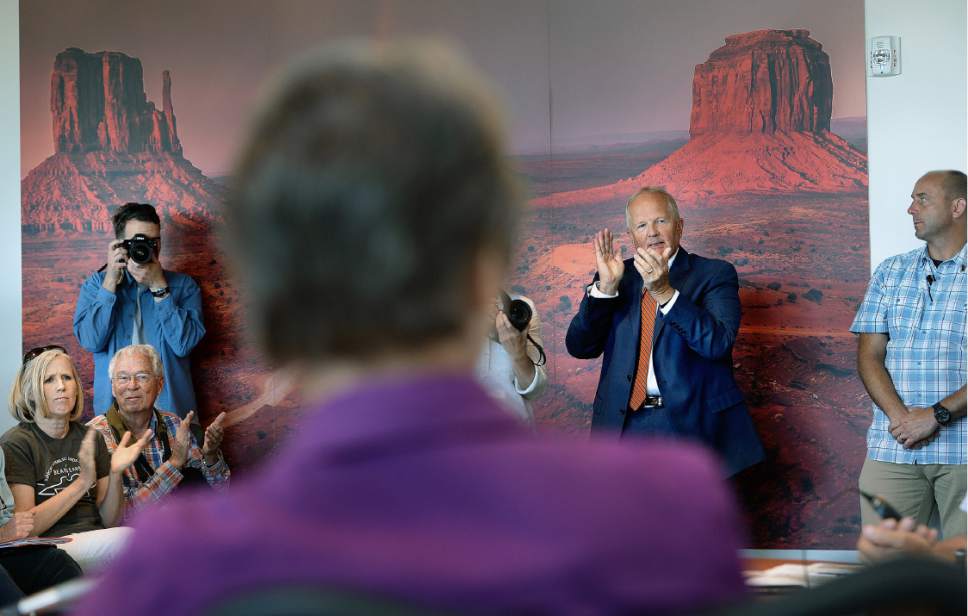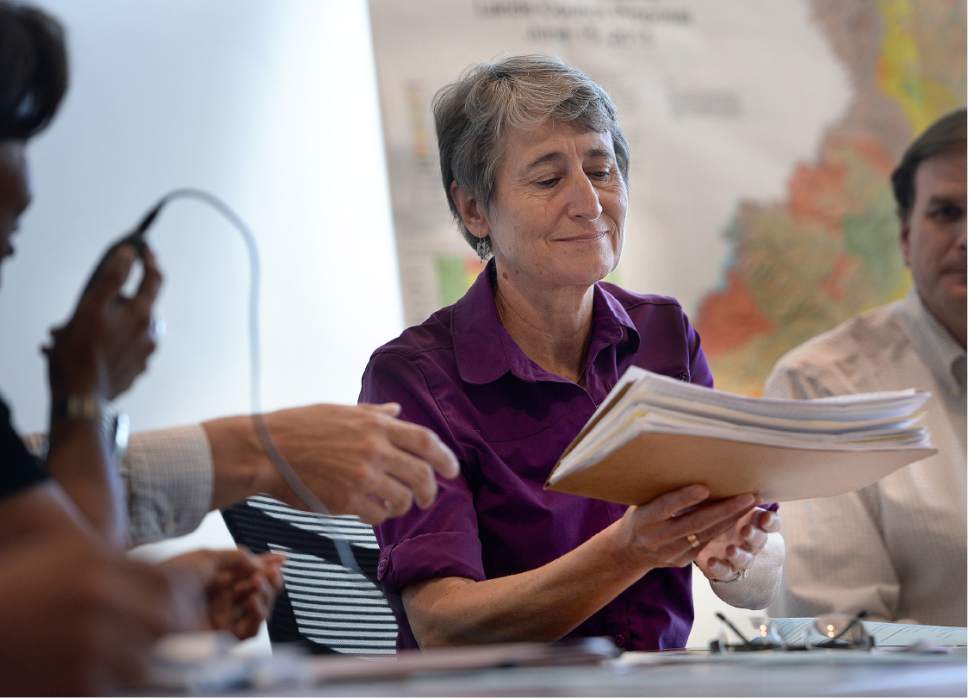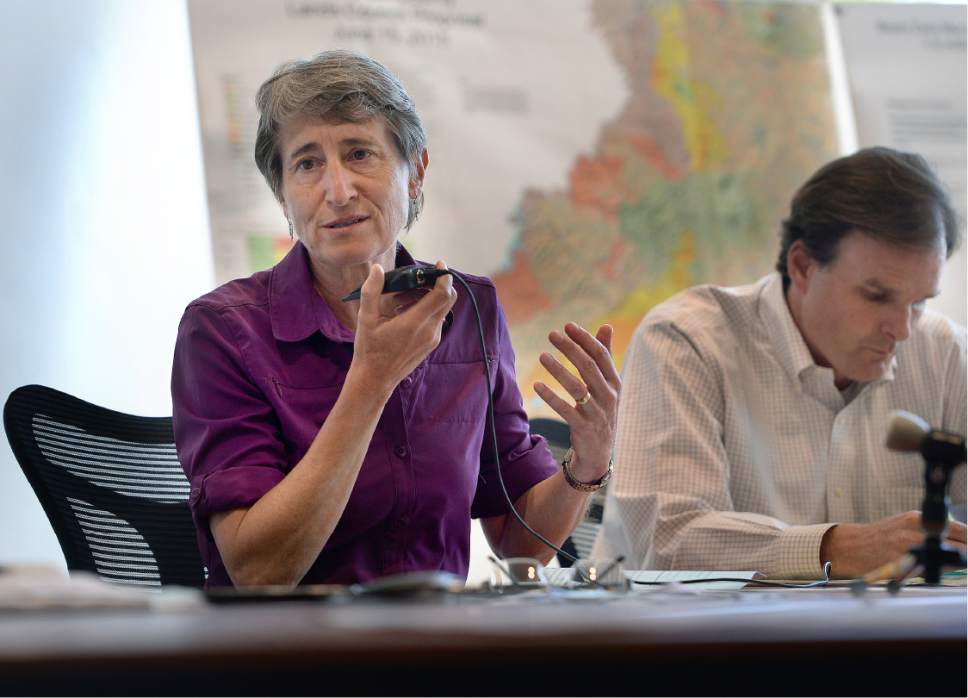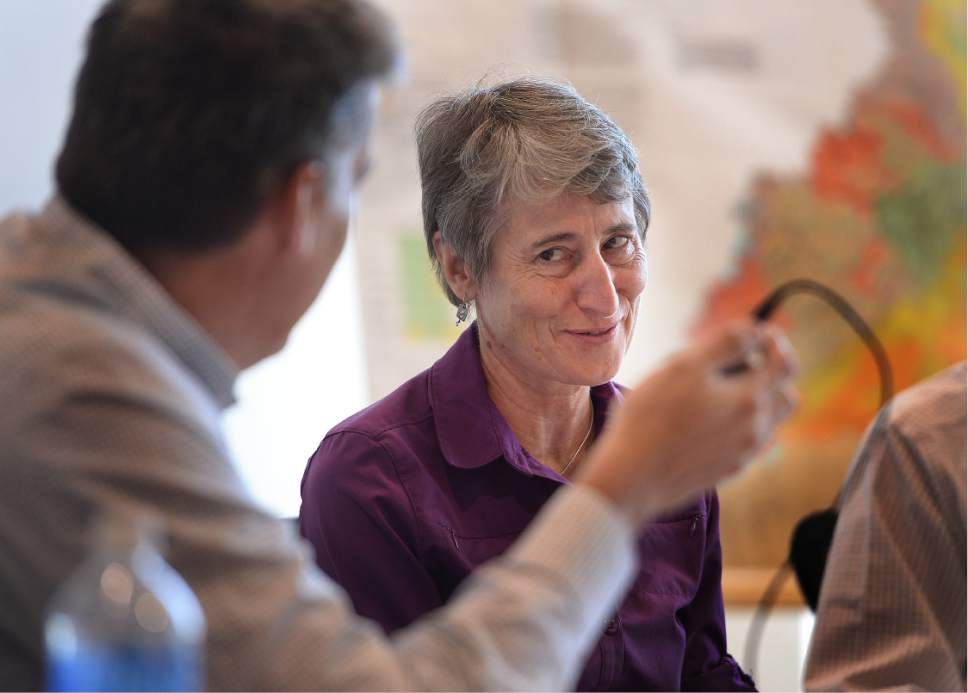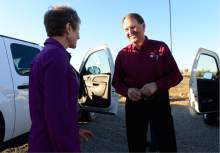This is an archived article that was published on sltrib.com in 2016, and information in the article may be outdated. It is provided only for personal research purposes and may not be reprinted.
Monticello • As Reps. Rob Bishop and Jason Chaffetz unveiled their long-awaited public lands plan, Interior Secretary Sally Jewell came face to face with critics of the proposed national monument Utah's delegation hopes to stave off.
The second day of Jewell's breakneck tour of southeastern Utah saw her drive westward from Moab's airport to view purported harmony between recreationists and oil and gas developers at Big Flats, then on to Gemini Bridges and Dead Horse Point, south to Indian Creek and finally to Monticello, where about 50 protesters welcomed her outside the Hideout Community Center with chants of "No national monument!"
"We protect it just fine," shouted one. Another: "Communist!"
The mood inside was lighter, but more than 150 people gathered to hear San Juan County commissioners denounce any plans for a Bears Ears National Monument, brought by a coalition of five tribes that late last year stopped participating in discussions about the Bishop-Chaffetz Public Lands Initiative and instead appealed to President Barack Obama to protect 1.9 million acres through the Antiquities Act.
San Juan County Commissioner Rebecca Benally, a Navajo, lamented that the debate over the monument has "divided my people."
"People that used to visit each other," she said, "no longer visit or talk to each other because of this."
After meeting with the commissioners, Jewell heard from representatives from Blue Mountain Diné and other tribes. Many expressed skepticism that the monument proposal was originated by Diné Bikeyah and concern that conferring such status on the culturally significant land would limit tribal access.
Harrison Johnson, a Navajo from McCracken Mesa, alleged that unnamed special interests drove the nonprofit tribal group to push the monument proposal. He also said those interests curried favor with tribes with no stake in the region.
"They're not going to live with this monument," Johnson said, "but we will."
Diné Bikeyah has said that more than two dozen tribes from the Four Corners region support the monument proposal, including those with ancestral ties to Cedar Mesa, as well as about 75 percent of the tribes recognized by the federal government.
Blanding's Clayton Long, president of the Blue Mountain Diné, said he was pleased Jewell saw that the two dozen or so Native Americans present "were saying the same thing," namely, that they saw a potential monument as the latest in a series of federal oversteps.
Benally said "foreigners" do not share her reverence for the sacred lands, pointing to Moab as an example of tourism run amok. People in San Juan County should decide the future of the area, she and other commissioners agreed.
Jewell thanked Benally for her insights but added: "I will say that while all politics are local, voices of people who care deeply about these public lands, which are owned by all Americans, are important to take into account."
Benally's fellow commissioners, Phil Lyman and Bruce Adams, welcomed Jewell but expressed concerns that monument status would wrest away control of the county's watershed. Lyman told the interior boss he didn't want the county's future to be decided by somebody in Washington consulting "Google Maps."
Jewell met that comment with a wry smile. That's not how it's done, she said.
Jewell said she has yet to read the latest PLI, but noted a January draft had "significant problems." Earlier Thursday, she indicated the bill's authors still have some work to do if they hope to prevent Obama from deciding the future on Cedar Mesa and Bears Ears.
Jewell spoke to Chaffetz's chief of staff, Fred Ferguson, from the iconic overlook at Dead Horse Point State Park — the Colorado River snaking thousands of feet below through the banded redrock expanse — about the need to persuade the Bears Ears Inter-Tribal Coalition to return to the table.
The coalition left talks, saying it had been "stonewalled." Late last month, it again declined an invitation to meet with members of Utah's congressional delegation.
"They were probably frustrated by their last experience, Fred, so there's definitely some bridge building you're going to have to do," Jewell said.
While observing twin sandstone arches at Gemini Bridges, discussion turned to the business draw of public lands. An agreeable Ferguson said Goldman Sachs has its second-largest office in the Americas in Salt Lake City, to which Jewell responded, "It's because of the outdoors. I do wish the delegation would talk about that more, honestly."
Jewell arrived in Salt Lake City on Wednesday morning, greeted at the airport by Gov. Gary Herbert before embarking on a driving tour of the San Rafael Swell with Emery County commissioners. She met commissioners from Grand County that night.
Her four-day visit culminates with a public hearing Saturday in Bluff.
While stopping to see world-famous crack climbing routes at Indian Creek, Jewell was told that a thousand people are expected in Bluff — and that some are already camping out. She said she hoped those who assembled would be respectful toward one another, a plea she repeated at the Monticello meeting.
Jewell's staff has said that her visit shouldn't be read as part of an escalation toward the creation of a monument.
"I'm here to listen," Jewell told people in Monticello.
Twitter: @matthew_piper


